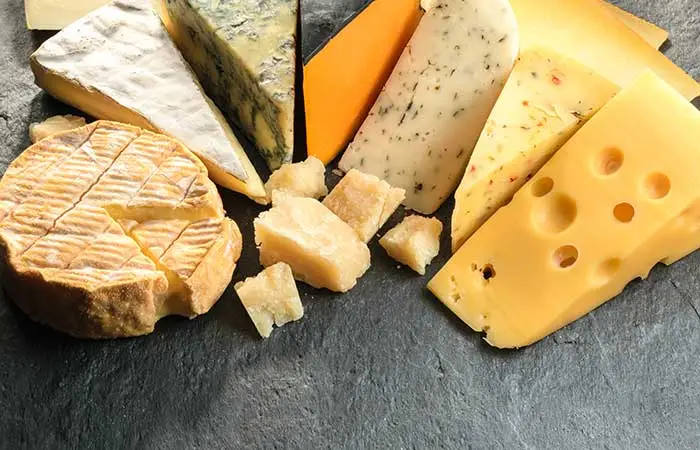Do You Know ... Why Is Some Cheese Orange?
Have you ever wondered why some cheddar cheeses are orange — since milk is decidedly white?
Cheesemakers have long given cheddars their orange hue using annatto, which is the seed from achiote trees and is used to this day.
But why are some cheddars dyed it in the first place? There are a few theories, and they have to do with historic cow-care practices, marketing and regional traditions.
Here are some origin stories:
The Grazing Theory
The science behind the “grazing theory” looks to explain that what cows eat can impact their milk.
Historically, in the late spring and early summer when cows grazed pastures, they ate grass containing higher levels of beta carotene, a pigment that’s found in fruits and vegetables like carrots. Once the cows ate this grass, the beta carotene ended up in the fat globules of their milk, giving milk, and in turn cheese, a golden red-orange hue.
However, during the fall and winter, when cows are kept inside and given other feed, their milk was white from decreased levels of beta carotene in their feed.
David McCoy, who does technical consulting on dairy products, says that to maintain a uniform color in cheese, cheesemakers began dying it.
The Way-Back Theory
Paul Kindstedt, author of “Cheese and Culture: A History of Cheese and Its Place in Western Civilization,” says the history of orange cheddar is tied to butter-making and 13th-century England.
When dairymen began to use cow’s milk instead of sheep’s, they skimmed most of the fat from the top to use for butter. Butter was a luxury good at the time, and butter with a golden hue was perceived to be higher-quality. The same was eventually true of cheese.
To get the right look for their butter, dairymen started dying it with things such as marigold to give it a continuous golden hue. As more and more of that fat was taken from the milk for butter, there was little left for cheese.
As this article on historic “cheese fraud” points out, to disguise the “low-fat” cheese, the practice of dying was carried over from butter making. Over time, consumers began to expect darker-hued cheeses and by the 18th century, all cheeses were dyed regardless of the fat content.
But it appears initially the dyeing tradition didn’t make it to the United States. There were mixed feelings toward dyeing, so until the export market opened with Europe in the late 19th century, much of domestic cheddar cheese was a pale white.
To compete with their European counterparts, Midwestern cheesemakers dyed their cheese. This also explains why today many in the Northeast choose white cheddar, while orange is popular in the Midwest. When the United States began to export cheese, the Northeast never took up the practice of dyeing and then had difficulty selling its product overseas.
The Marketing Theory
The final theory speaks to how the deep orange color of orange cheddar gained its roots. Dean Sommer, of the Center for Dairy Research at University of Wisconsin-Madison, says the coloring of cheddar is something he has long pondered. He believes the tradition goes back to Leicestershire cheese, cheddar’s ancestor.
Cheese-making styles were very similar in 17th-century England, so the cheesemakers of Leicester needed to find a way to differentiate their product. They began dyeing their cheese with annatto seed, the same dye used today.
In the 20th century, during World War II, dyeing stopped to follow the British national recipe and White Leicester was born. After the war, the practice resumed, and orange-hued Leicestershire cheese became known as Red Leicester, leading to orange cheddar.
While all these theories are plausible, we might never fully know why cheddar was originally dyed orange. But it does give present-day cheese lovers an opportunity to taste one of each color to find their favorite.
















